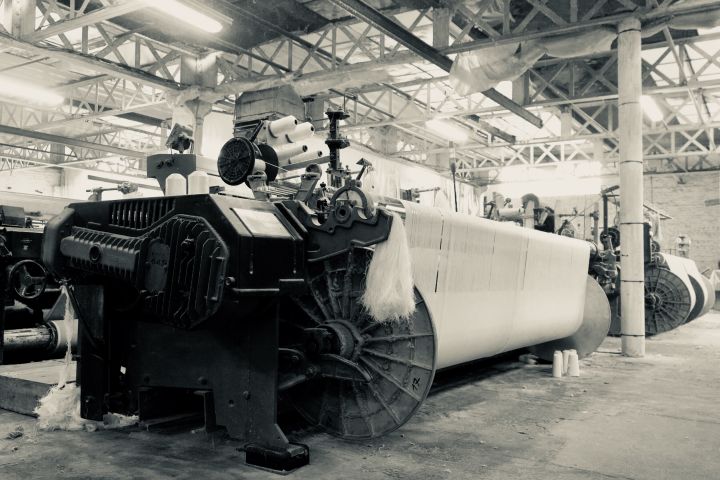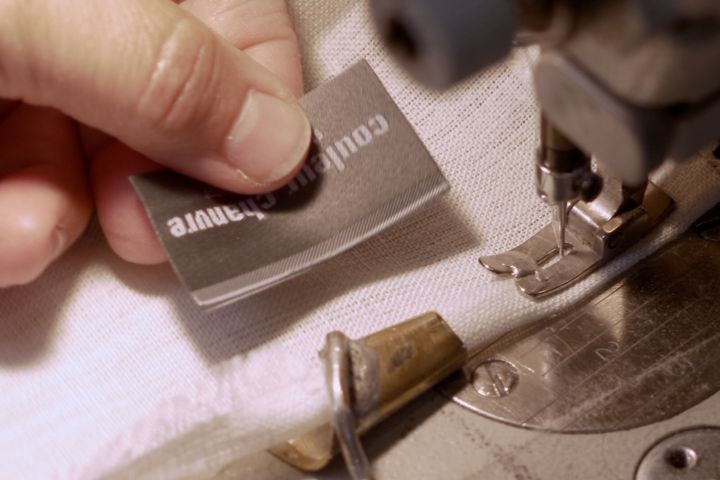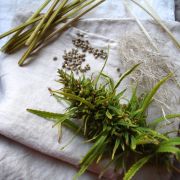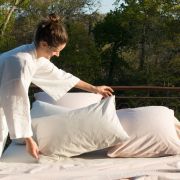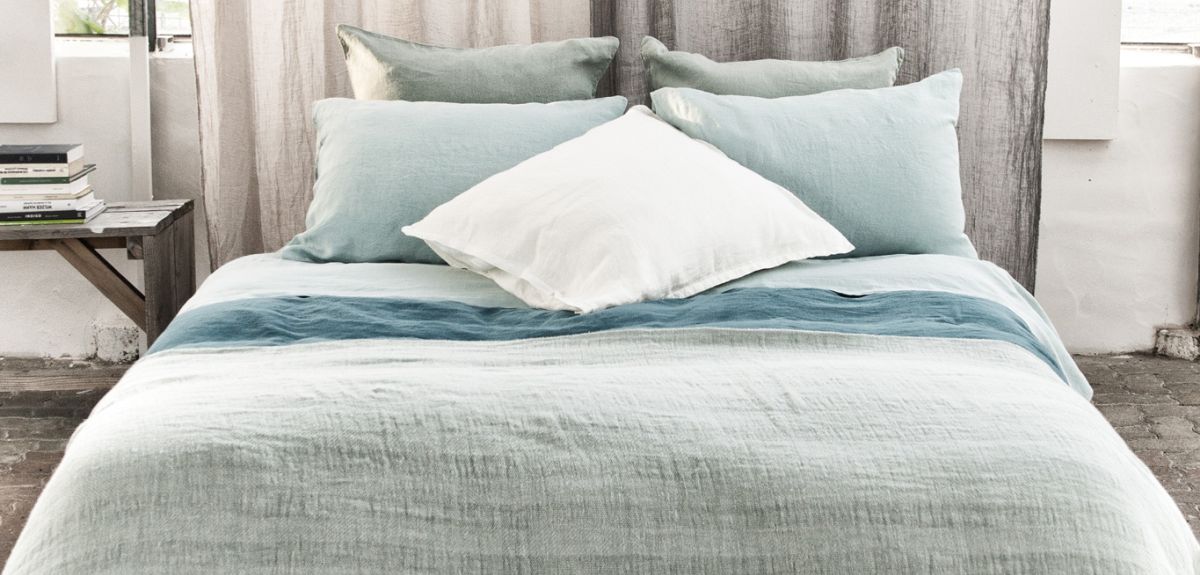
Our Exceptional Materials
Here at Couleur Chanvre, we only select long and noble fibres, meaning the highest quality hemp, linen or cotton. Because the length, smoothness and purity of natural textile fibres are essential for ensuring the softness, quality and durability of the final fabric.
And thanks to our unique process - 0% Dye - the purity and benefits of these exceptional natural fibres are maintained from beginning to end.
This process, which we have developed after years of research, excludes from our dyeing phase all primers and chemical products with a toxic finish, endocrine disruptors, allergens or irritant products, which are used in almost all textile industries to give materials a softness and artificial qualities.
And we are the only ones who use such a process.
This is why the qualities of our Couleur Chanvre linen are entirely naturally, thanks to the purity of our fibres and our unique process (and not because of the products used). This is why they last a long time.
Hemp
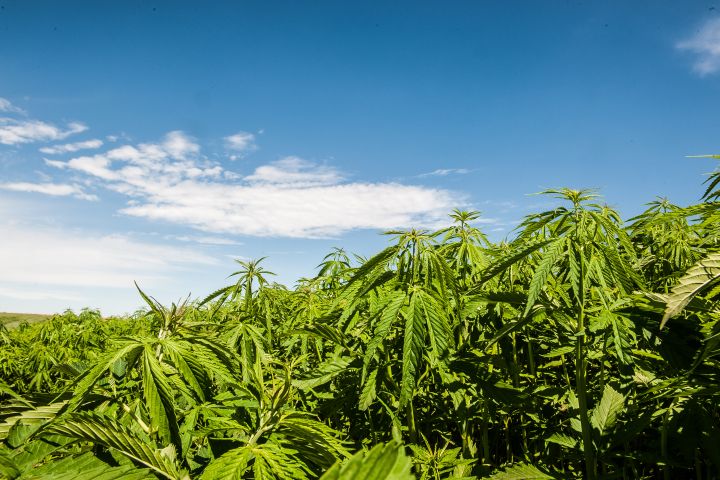
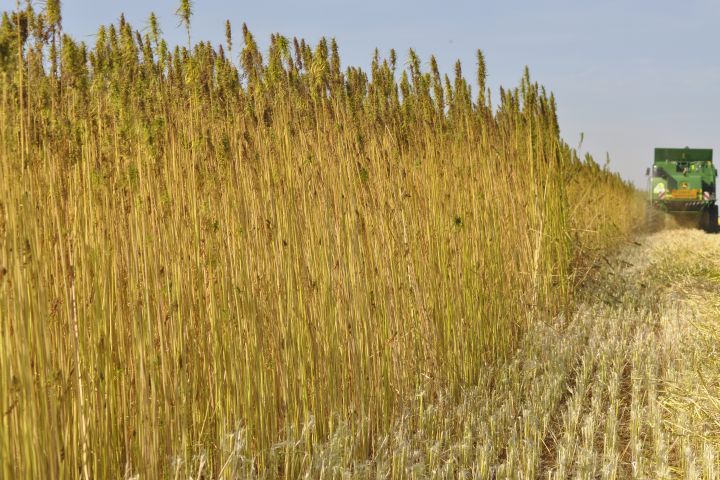
Hemp is a part of our cultural and historical heritage, as humans have used it for over 8,000 years. It was the first plant used by humankind for fabric, medicine, construction and paper. However, hemp fell victim to the chemical industry lobby in the 30s and it was banned from the USA in 1937. It was then banned in the rest of the world in the years that followed. Today, different countries are gradually rediscovering all of hemp’s properties, all its applications et the advantages it could bring. Hemp cultivation is spectacular because in 4 months, the plant reaches a height of 2.5-4 metres depending on the species, with no need for other inputs, pesticides or herbicides.
Hemp is the best known biomass plant to date. It cleans and revitalises the soil and it can absorb up to 15 tonnes of CO2 per hectare.
The whole plant can be used, from the seeds, to the wood-like core, to the fibres themselves. In our opinion, hemp is the model plant for durable development.
If hemp cultivation is rapidly expanding, it is often for food, building, pharmaceutical products or paper. Hemp textiles remain very rare, because harvesting it is difficult, particularly due to the height of the plant and its stem’s rigidity. Lots of the stages have to be done by hand, which is very difficult and expensive in our country. In fact, it really is a production process which needs to be reinvented, hemp varieties to be selected to get the best fibres and specific machines and techniques to be adapted for cutting, putting into windrows, harvesting and defibring.
We have been lucky enough over the years to work which a French hemp stock which was specifically produced for a big Italian fashion designer.
At the same time, we have been actively working in close collaboration with farmers and cooperatives for more than seven years towards the renaissance of a French hemp textile sector. In 2013, The Organic Linen and Hemp Association was created, which we are subscribed to. The progress of this sector is happening, but the quantity produced remains insufficient for our brand’s needs. This is why, in recent times, we have had to source hemp fibres from other countries in Eastern Europe and Asia. Wherever it is produced, hemp is a plant that doesn’t need inputs or chemical products to grow healthily, so the hemp fibres obtained from defibration are perfectly healthy. We extract the fibres at this stage and can therefore be sure that they have not been tainted by inappropriate chemical treatments. Afterwards, this hemp goes into the Couleur Chanvre production circuit, where it is woven, tailored, dyed and finished in France.
Hemp fibre is difficult to work with, because of its irregularity and solidity, which is why we use artisanal manufacturing methods, which are better adapted to working with this magnificent fabric. Many stages are carried out by hand, by passionate people who are committed to making our products with love and to conserving all of hemp’s benefits.
We use hemp for bedding, as well as in the form of hemp cloth for tagelmusts, shawls and curtains.
Flax (Linen)
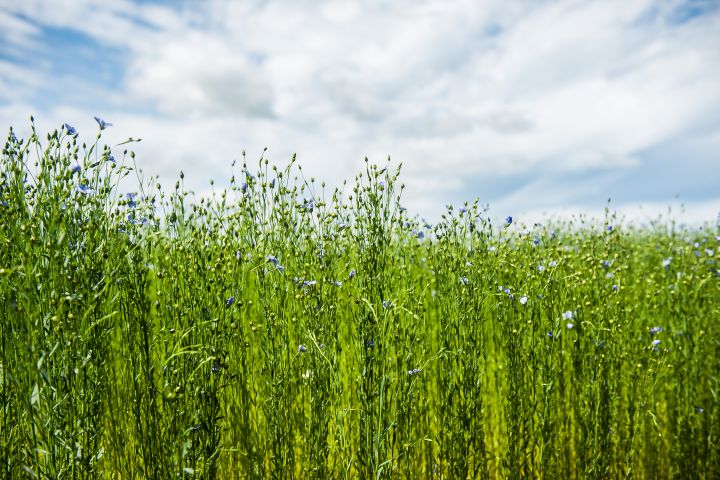
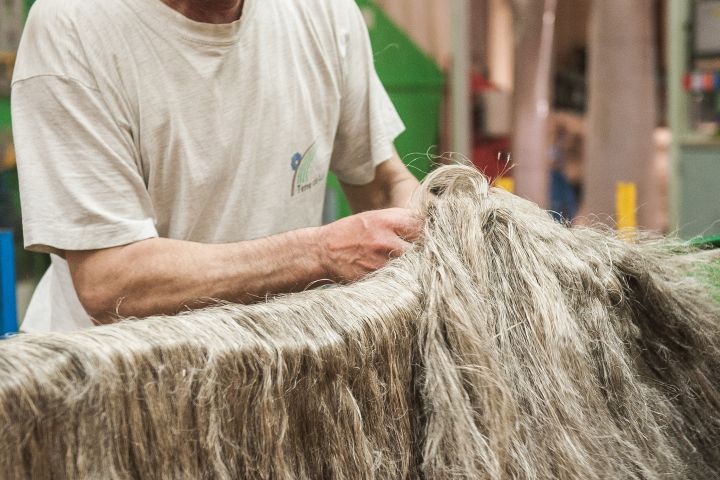
As France is the top global producer of flax, it could be considered a local plant. It’s an annual plant, cultivated for its fibres and oilseeds. Archaeologists have dated the beginning of flax cultivation to 8000 B.C. in Europe, as well as in Mesopotamia, Assyria and Egypt where flax was used to wrap mummies.
It is eco-friendly because it needs very few inputs, pesticides or weed killers.
Flax is sown in March and April and only needs 100 days to mature. At this point, it reaches a height of around 1 metre. In mid-June, flax is in flower for about a week and the sight is just magical. Walkers are amazed by the fields, blowing in the wind like a soft blue wave.
The flax is then pulled up from mid-July and then laid down in parallel on the ground (this step is called swathing or windrows). The grains are then harvested to make oil and to sow the following year.
Retting, which is a natural process and lasts several weeks, is a delicate stage which involves beginning the separation of the straw fibres. It’s Nature, the alternation of rain and sun which does this work and the climate of North-West France and Belgium is particularly adapted for this retting phase. When the flax growers think the retting is complete, they roll up the flax and take it to be scutched, a mechanical operation which involves stripping the flax of everything apart from the fibres, separating the long, most precious fibres from the short fibres, which can be turned into low quality or “nonwoven” yarn. Hackling involves finally untangling the long fibres to get a wonderful ribbon which will be sent to be spun.
Linen naturally offers freshness and is thin, comfortable, regulates temperature and quickly absorbs humidity or perspiration. It is ideal for contact with skin because it is hypoallergenic. It is also a long-lasting fibre which, with time, remains as beautiful and as smooth as ever.
We use several grammages of linen: an elegant, thin linen used for bedclothes, a thicker linen for table linen which hangs beautifully and finally heavier grammages for curtains, cushions and other decorative articles.
Linen naturally offers freshness and is thin, comfortable, regulates temperature and quickly absorbs humidity or perspiration. It is ideal for contact with skin because it is hypoallergenic. It is also a long-lasting fibre which, with time, remains as beautiful and as smooth as ever.
We use several grammages of linen: an elegant, thin linen used for bedclothes, a thicker linen for table linen which hangs beautifully and finally heavier grammages for curtains, cushions and other decorative articles.
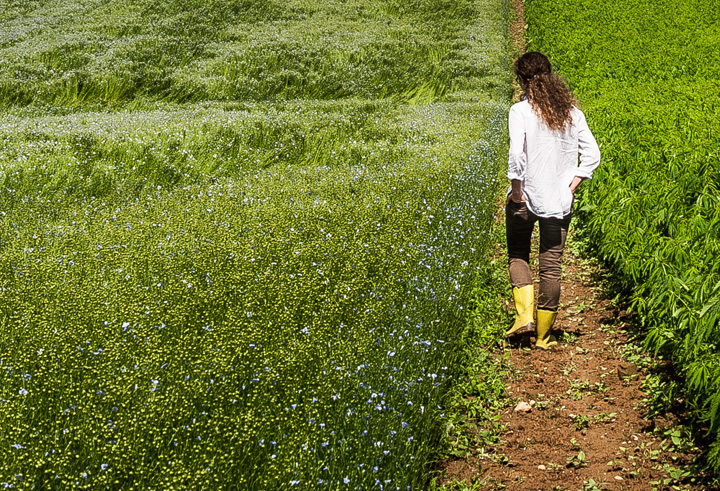
At Couleur Chanvre, we have chosen flax which is cultivated with passion by French farmers from the “Terre de Lin” [Flax World] Cooperative in Normandy. We have selected long, fine and soft fibres, to produce an exceptional yarn.
Cotton
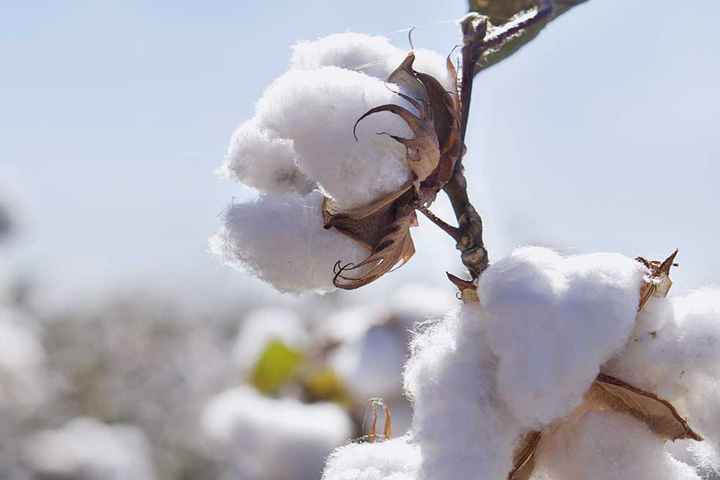
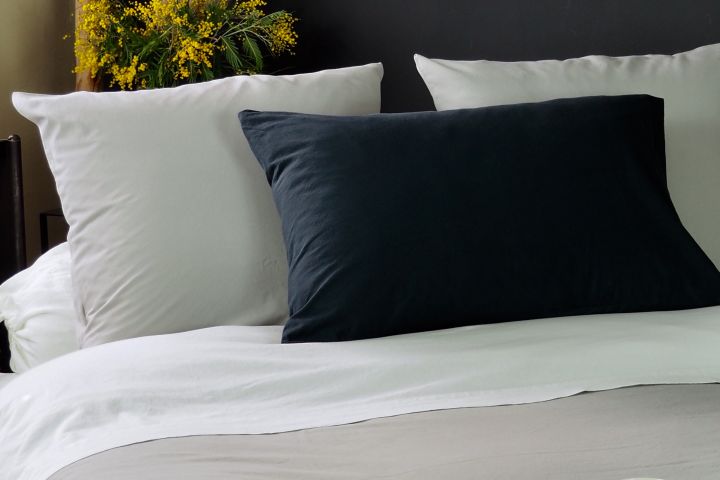
Cotton is the most used natural fibre in the world. Its cultivation dates back several millennia and was first developed in South America, India and Africa. Today, the United States, China and India are the biggest producers of cotton, which is nicknamed “white gold” thanks to its economic importance.
Cotton plants grow in tropical and sub-tropical zones. In the wild, they can reach 10 metres, but when cultivated, they are not allowed to exceed 1 metre, which makes gathering easier. When they are in bloom, they have big flowers with five petals. The cotton fruit is a rigid capsule containing grains. Cotton fibres, made of almost pure cellulose, come out of this capsule. They can be divided into two categories, big fibres which are used to make the best yarn, “long brin” and shorter hairs.
Nonetheless, cotton cultivation presents problems. In its conventional cultivation, it needs a lot of water, almost half of the plantations are irrigated - in very hot countries. It is a very fragile plant and to intensively cultivate it requires a large quantity of inputs and pesticides. We estimate that 25% of global pesticides are used in cotton cultivation, even though it only represents 2% of cultivated lands!
It is therefore crucial that we shift towards organic cotton which uses natural fertilisers and inputs, as well as traditional methods of irrigation. Naturally, we have made this choice at Couleur Chanvre.
Once it has been harvested, the cotton is dried, then stripped of its impurities and carded, this stage consists of paralleling the fibres in order to produce a ribbon which is then sent to be spun.
The quality of a cotton depends on its fibres, their delicacy, colour and purity.
Our cotton is smooth, soft and silky on the skin and it gives our articles a refined, elegant allure. It is comfortable, hypoallergenic, absorbent and strong. Its maintenance is easy.
We use organic cotton for bed linen in particular.
Manufacture process
Whether it is hemp, linen or cotton, all our Couleur Chanvre linen is of the same quality and follows the same production processes. The weaving, tailoring, dyeing and finishing is all done in France, these last stages are conducted in our St Jean de Luz workshop, according to a unique process which excludes all toxic, irritant and allergenic products.
